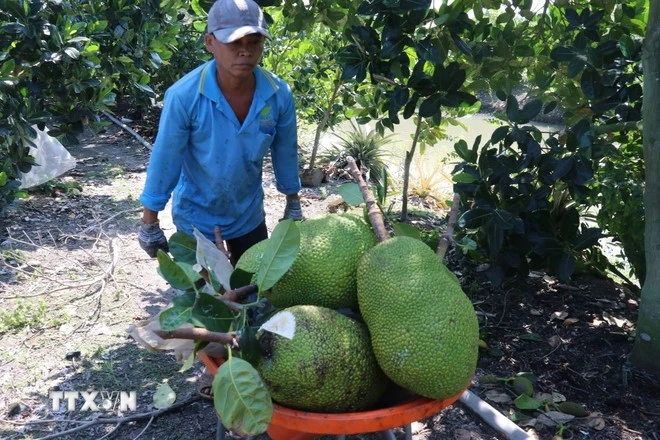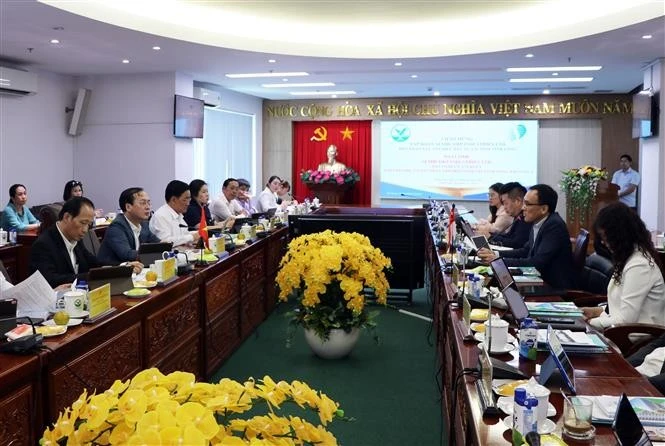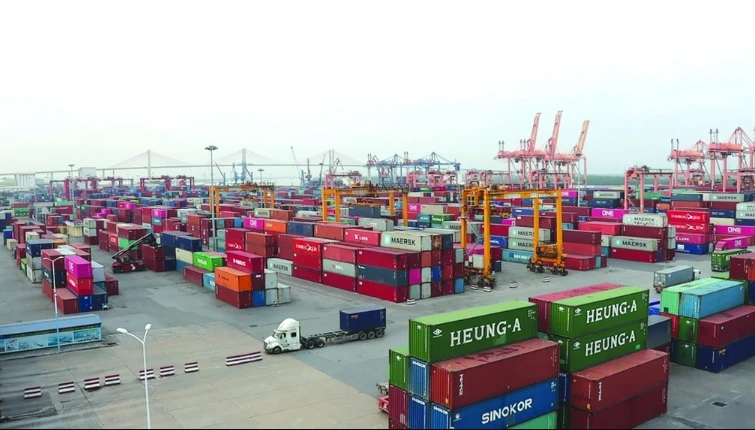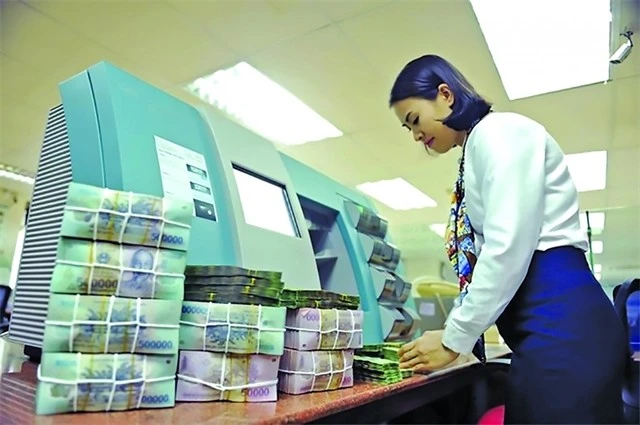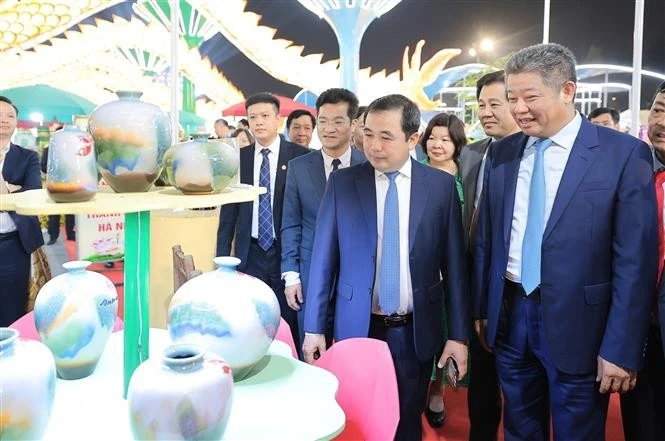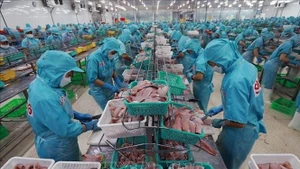Significant achievements
Hoang Huu Yen, General Director of Intech Group—a company specialising in mechanics, automation, technology, and energy—shared that since the beginning of the year, orders from major markets such as the US and Japan have continued to pour in. The company is fully booked through the end of May, with some products scheduled as far as the end of the second quarter. “Although our production and business performance in the first three months increased by 30% compared to last year, we expect a significant breakthrough by year-end, as many businesses and factories ramp up investments in equipment for peak operations,” he said.
Regarding the domestic economy, Nguyen Thi Mai Hanh, Head of the National Accounts System Department (General Statistics Office), noted that global developments remain complex and unpredictable. US policies and the responses of other countries have significantly impacted production, exports, and foreign direct investment (FDI). Domestically, under the government’s close and flexible leadership, the economy has shown positive progress.
Specifically, in the first quarter of this year, the industrial production index rose by 7.8% year-on-year, with the processing and manufacturing sector growing by 9.5%—the highest rate in the 2020–2025 period. Public investment also surged by 19.8%, especially in key infrastructure projects. FDI disbursement increased by 9.3% year-on-year.
Additionally, exports continued to grow strongly, with goods exports up 10% and services up 18%. High-value exports such as rice, coffee, and seafood—boosted by good product quality and favourable pricing—contributed significantly to the trade balance. Consumption remained stable, partly due to a substantial increase in government spending compared to last year, when salary increases had yet to be implemented (regular spending rose 16.8%). Macroeconomic stability, controlled inflation, and balanced key economic indicators are laying a solid foundation for growth in the coming quarters.
Intense pressure
However, with economic growth reaching 6.93% in the first quarter, the General Statistics Office estimates that an average growth rate of over 8.3% will be required in the remaining nine months to meet the 8% annual target—an ambitious goal given the current global economic climate.
If the US imposes a reciprocal 46% tariff on Vietnamese goods, exports and numerous economic sectors could be severely affected. Key export categories—including computers and electronics, machinery, phones, textiles, footwear, and wood products, which together account for over 74% of Vietnam’s 2024 exports to the US—would be hit particularly hard. Moreover, globally higher tariffs could spur inflation and dampen consumer demand, further affecting Vietnam’s export outlook.
At the Vietnam economic development update press conference on April 9, Shantanu Chakraborty, ADB Country Director in Vietnam, noted that strong trade growth, a recovery in export manufacturing, and robust FDI inflows have fuelled Vietnam’s economy in 2024.
However, global shifts—including new US tariffs and geopolitical tensions—pose significant challenges for export-dependent economies. External risks such as escalating tariffs, retaliatory measures, the ongoing Russia–Ukraine conflict, and unrest in the Middle East could dampen global growth in the short to medium term. Additionally, economic slowdowns in the US and China—Vietnam’s major trade partners—could further impact the country's growth trajectory.
As such, despite Vietnam's impressive 7.1% GDP growth in the first quarter, the ADB has maintained its full-year growth forecast at 6.6% for 2025.
Promoting other key growth drivers
The ADB Country Director also stated that the Vietnamese government’s ambitious growth strategy could help mitigate external risks. This would stimulate domestic demand, enhance short-term policy effectiveness, and promote medium- to long-term private sector development.
Vietnam’s deeper integration into global supply chains is also crucial. Understanding and addressing challenges in expanding participation and increasing value-added production is essential for long-term economic sustainability.
According to Nguyen Thi Mai Hanh, to achieve the 8% GDP growth target for 2025, Vietnam must urgently negotiate with the US to lower tariffs on Vietnamese imports. Additionally, leveraging free trade agreements such as the EVFTA, CPTPP, and RCEP will help diversify markets and reduce over-reliance on the US. Targeted trade promotion, linking exporters to international e-commerce platforms, and boosting domestic consumption are also important strategies.
Support for domestic consumption should continue through VAT reductions and broader tax relief measures to stimulate demand—especially for essential goods—while improving real incomes through wage increases, social insurance, and welfare policies to enhance purchasing power.
Finance Minister Nguyen Van Thang emphasised that the immediate task is to intensify bilateral negotiations with the US for fair and balanced tariff policies. Simultaneously, Vietnam must maintain macroeconomic stability, strengthen growth fundamentals, promote both public and private investment, attract FDI, and develop the domestic market and tourism sector. Legal and institutional reforms must also be accelerated to improve the business environment.
He further stressed the importance of transparent communication regarding government actions and timely responses to US policies to restore business, investor, and public confidence. “We must quickly grasp and resolve local challenges, provide guidance within our jurisdiction, or escalate them for higher-level resolution to create the best conditions for implementation,” Minister Thang stated.
According to the General Statistics Office and the Ministry of Finance, Vietnam’s GDP in the first quarter of 2025 grew by 6.93% year-on-year—lower than the 8% annual target and the 7.7% growth seen in the first quarter of 2024—but still the highest Q1 growth rate since 2020.

